“What’s that on the road?” I wonder out loud, squinting at the dark, oblong shape in the center of the red dirt track. A tree root? A rusted tail-pipe? A weird rock?
As we slow down, I recognize the strange shape from my childhood days watching Steve Irwin man-handle reptiles. “Oh my god, it’s a sleepy lizard.”
My boots hit the dirt before my partner can stop the car, red dust billowing in through the open door as I tear up the road.
The lizard stops and gives me the side-eye. I kneel down to take a photo, and then, as if on cue, it opens its mouth wide, splays an undulating, navy-blue tongue, and lunges towards my lense.
This sleepy lizard isn’t all that sleepy.
Sleepy, Stumpy-tailed, Two-headed, Pinecone
Depending on where you are in Australia, the species known as Tiliqua rugosa might be called by any one of its colorful common names: shingleback, bobtail, two-headed lizard, boggi, stumpy-tailed lizard, pinecone lizard, and, of course, the sleepy lizard. These lizards are actually a type of skink, related to Australia’s other blue-tongued skinks.
Sleepy lizards aren’t small: they can grow up to 12 inches long and have a chunky, wedge-shaped head, thick scales, and tiny legs that stick out from either side of their body. Perhaps their most notable feature is their short, thick tail, which contains fat reserves to help the lizard survive harsh droughts. (It also looks exactly like the lizard’s head, which might help confuse predators.)
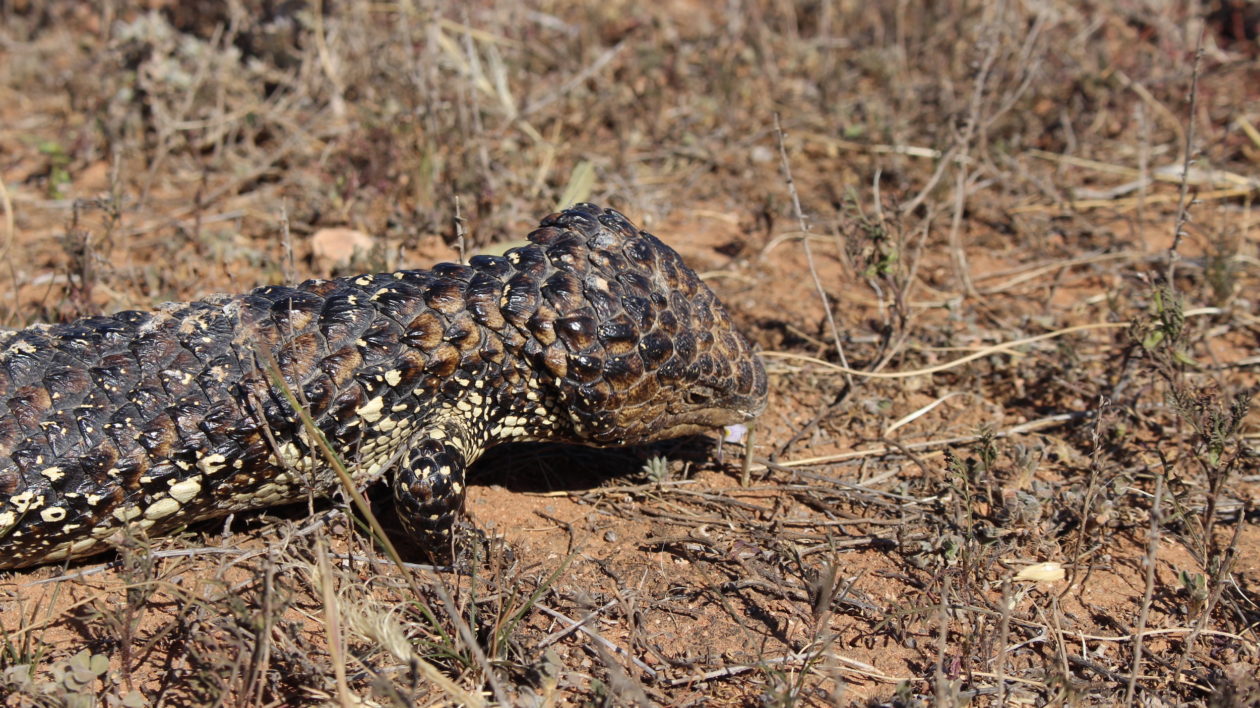
Sleepy lizard scales are variable in color, from cream to yellow to a dark, chocolate brown. Glinting in the sunlight, they give the lizard a wet-looking appearance, like a chunk of scrap metal or — as my partner noted with glee — a comically large turd.
Sleepy lizards are found throughout semi-arid habitats across the southern half of Australia, up into central Queensland. Each lizard has a home range of between 7 and 22 acres. They spend the night sheltering under vegetation or in burrows and logs, emerging in the morning to bask in the sun. Then they set off to forage for flowers, plants, snails, insects, and occasionally carrion.
When threatened, sleepy lizards open their mouths in a wide, menacing gape and flick their tongue in an attempt to frighten predators, which include dingos, cats, foxes, birds of prey, and snakes.
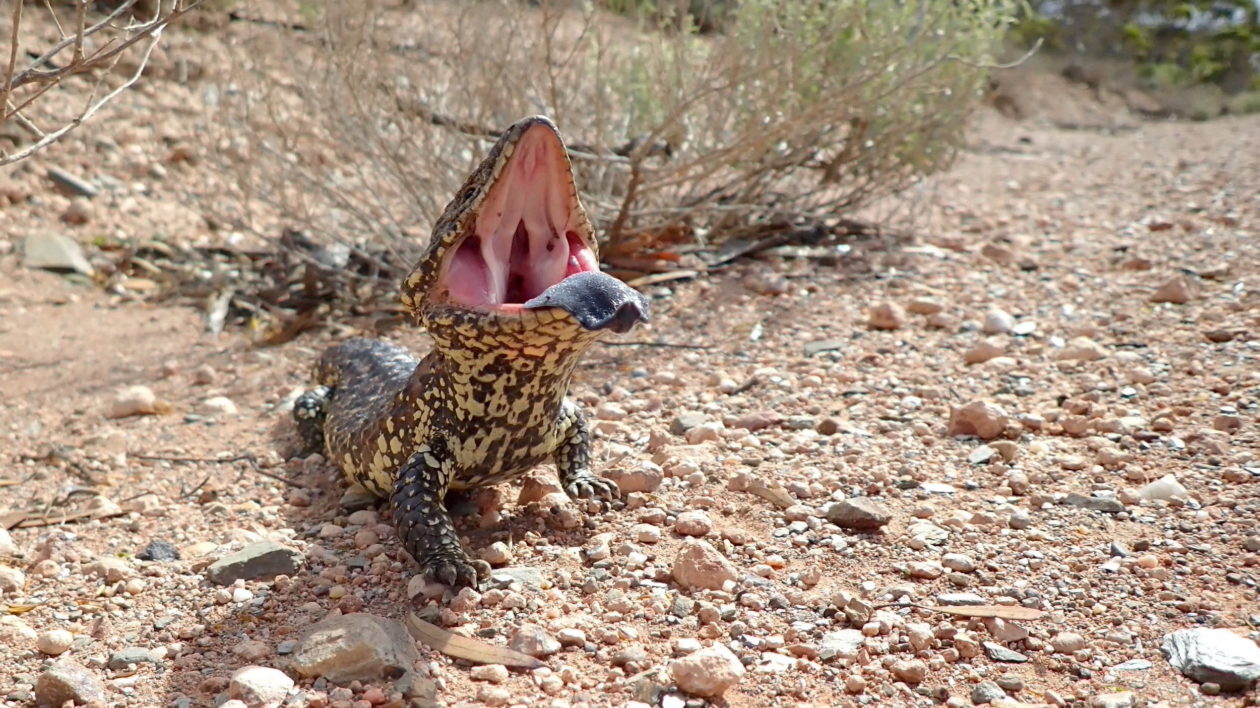
40 Years and 14,000+ Lizards
Nearly everything we know about sleepy lizards comes from a research project out of Flinders University in South Australia. In the early 1980s, scientist Mike Bull set out to study two species of tick that parasitize sleepy lizards. He established a 25-by-25 kilometer research site northeast of Adelaide and got to work catching lizards.
Forty years later, the study is the longest-running lizard survey in the southern hemisphere. And Bull — along with generations of other scientists — have discovered incredible things about this unassuming little reptile.
“One of the biggest things Bull discovered was that sleepy lizards are monogamous,” says Mike Gardner, a scientist at Flinders University and Bull’s eventual successor.
Sleepy lizards can live for up to 50 years, and they spend much of their lives alone. But each spring, they reunite with their partners to mate, after a prolonged courtship. These partnerships can last for decades; one pair of lizards in the study was still together after 27 years.
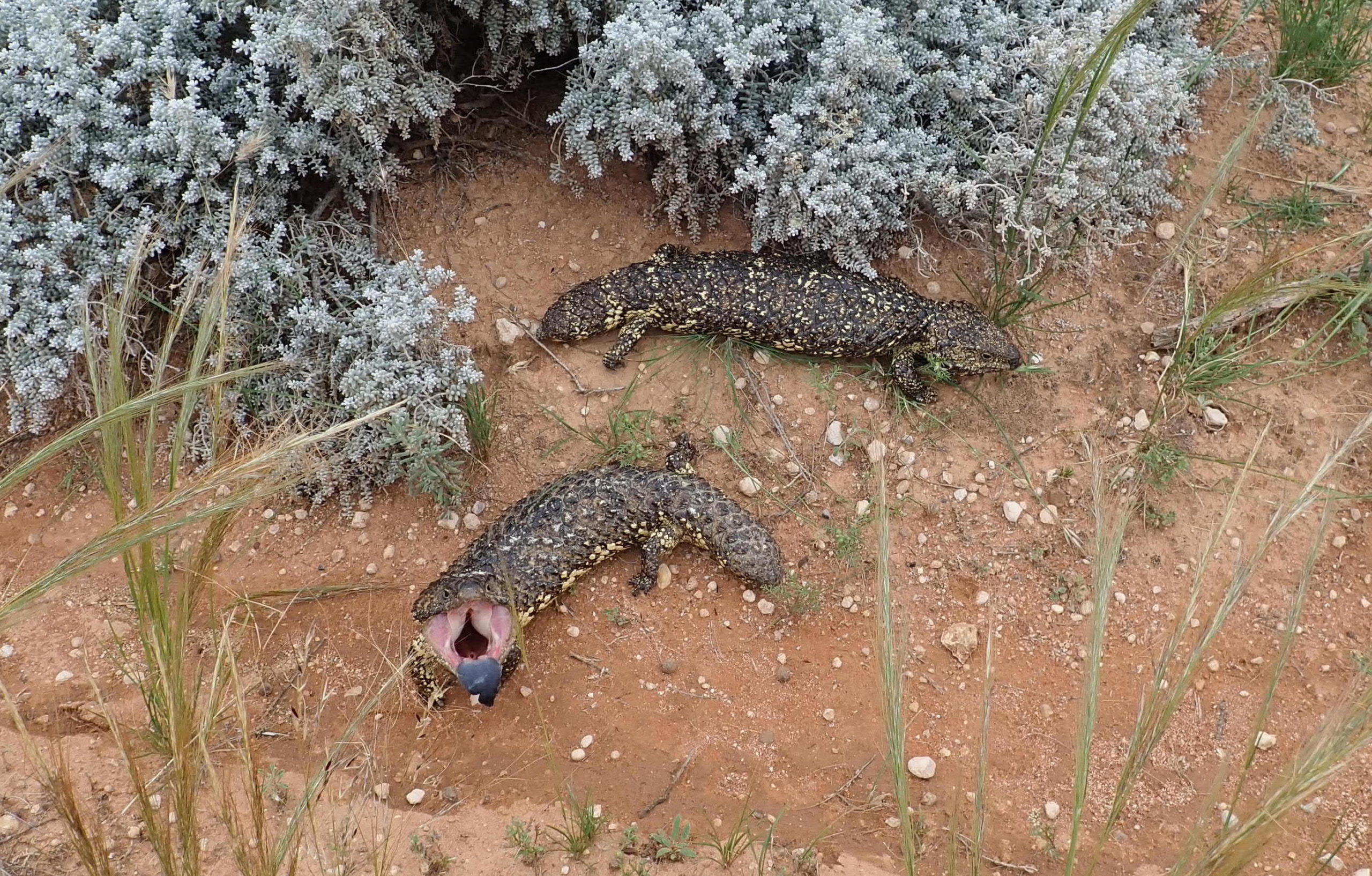
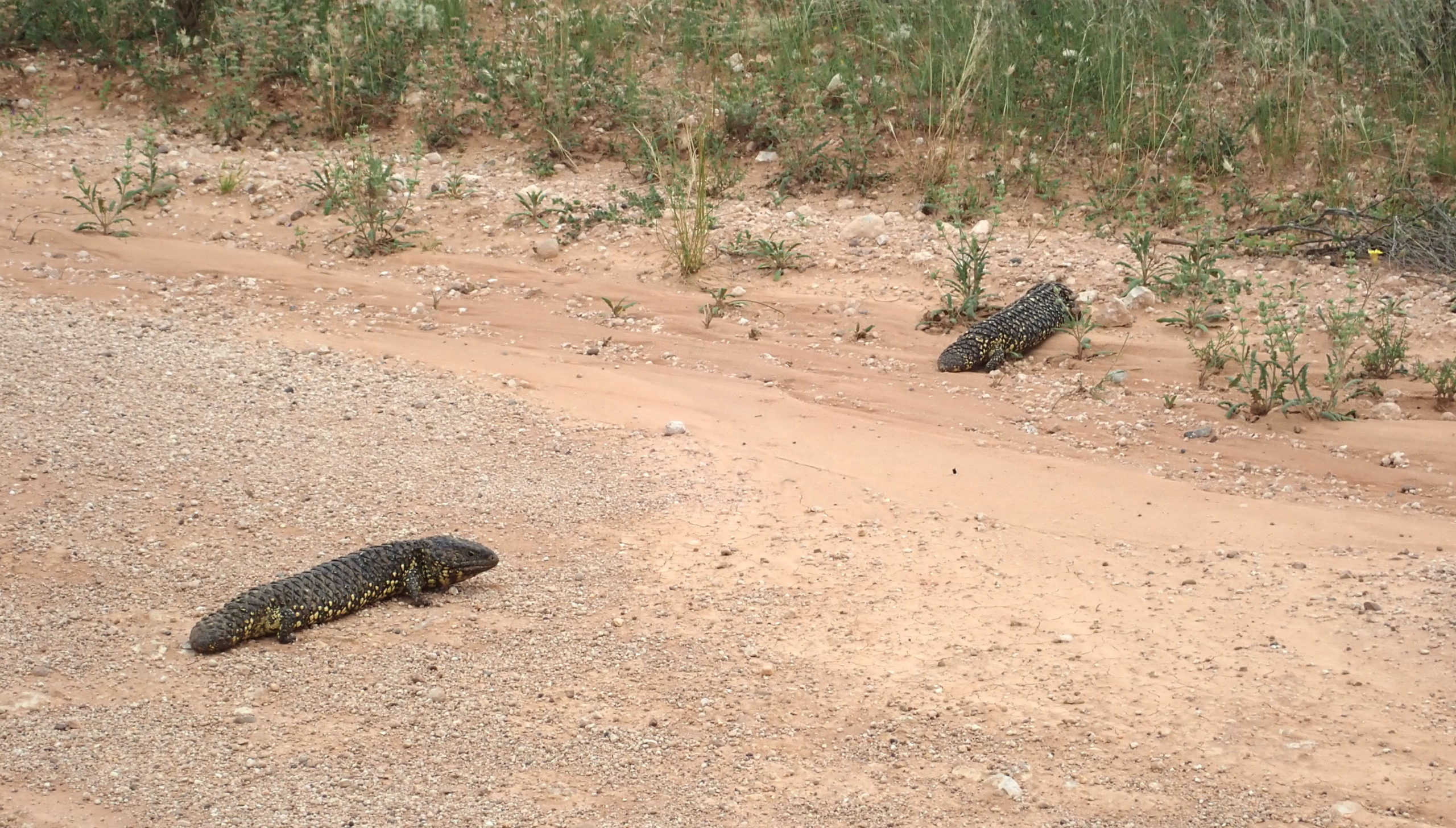
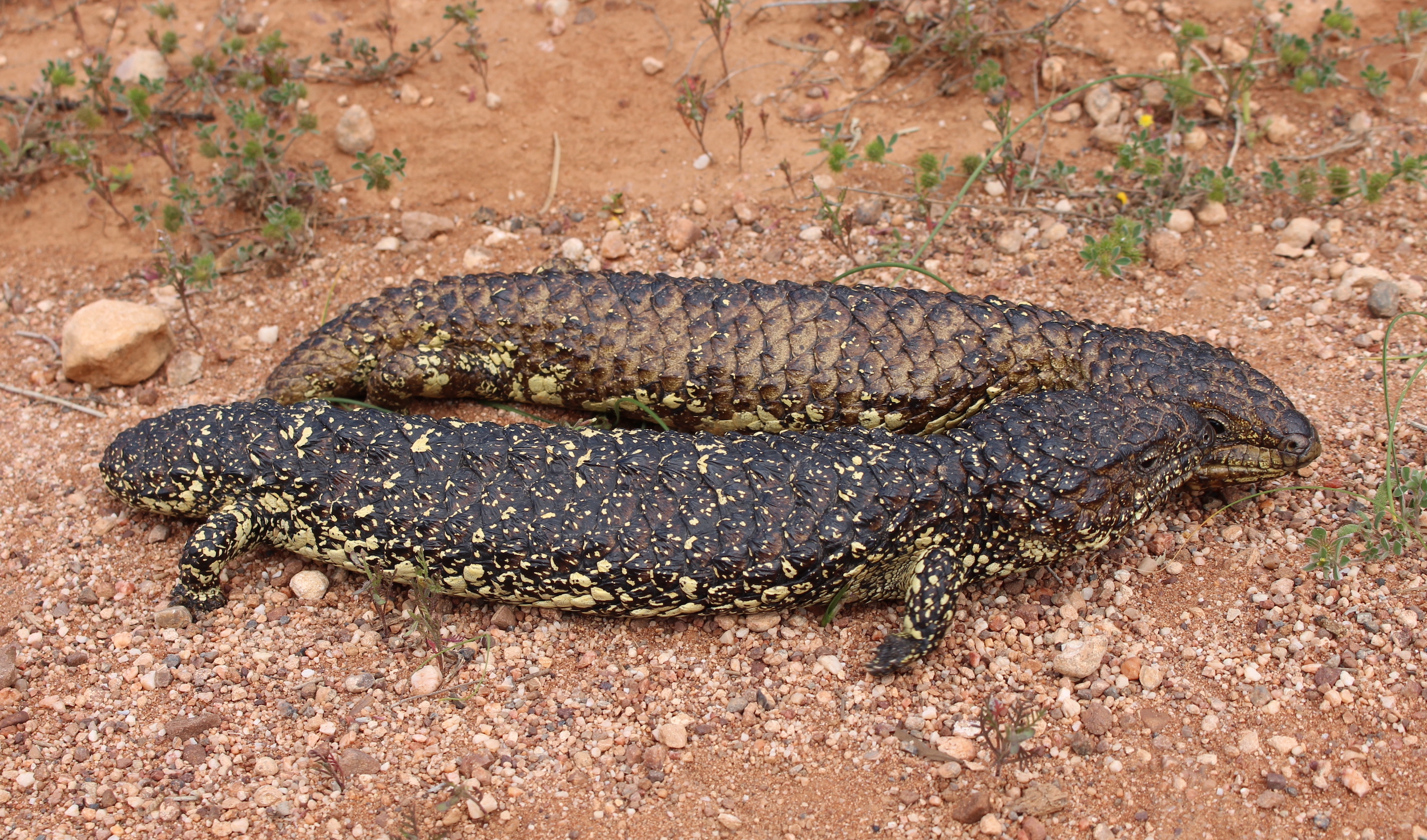
“That discovery started research programs all across the world to look at sociality in reptiles,” says Gardner. “At the time, no one thought they would have complex sociality.” And while research on the social lives of lizards is far more robust, thanks to Bull’s discovery, sleepy lizards are still the only known monogamous reptile in the world.
After reuniting with their partners, sleepy lizards court for up to 8 weeks before mating. Males will follow females during this time, trundling close behind them and acting as a lookout while the females feed on plants and flowers. Males stay with their partners after mating, which occurs sooner for pairs that are already familiar with one another, compared to newly partnered lizards.
After about 5 months, the female gives birth to between 1 and 4 live young that can be up to one-third of the mother’s size. Baby sleepy lizards are precocial, meaning they can take care of themselves immediately after birth. But they don’t scamper off into the bush straight away. Young stay within their mother’s home range for up to a year, and mother lizards can recognize their young via chemical signals.
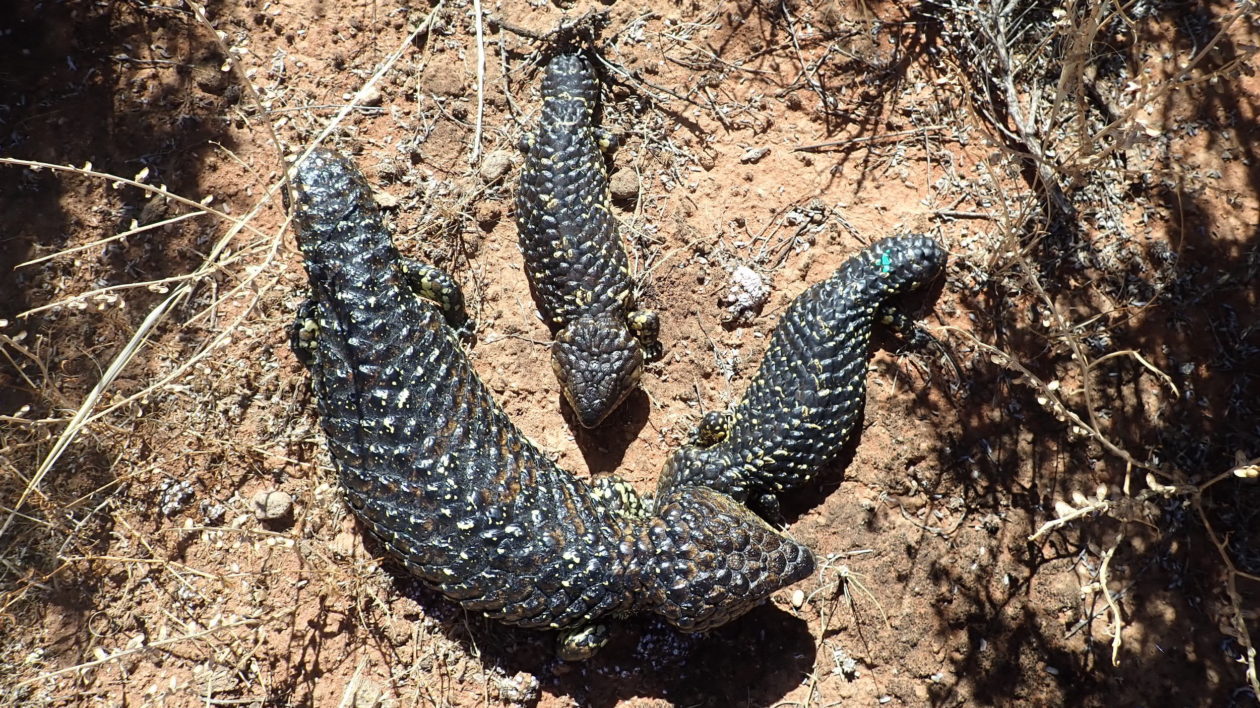
Lovers and Fighters
For anyone who doubts that a cold-blooded reptile can form a lifelong bond, consider this: Scientists, including Mike Bull, have documented sleepy lizards defending their dead partners on multiple occasions, usually after one is killed by a vehicle.
It would be anthropomorphic (and a bit unscientific) to call this “grief.” But it’s clear that the lizards are distressed by their partner’s death, which isn’t all that surprising given that sleepy lizards are a long-lived, social, and monogamous species.
Vehicles are a serious threat to sleepy lizards, which aren’t well-designed for life near roads: They’re slow-moving, often feed on roadside vegetation, and have the unfortunate habit of freezing when they sense a threat.
Spotting a sleepy lizard while it crosses the road is so common that it’s how Gardner and other scientists conduct their annual lizard survey. Their study site is crisscrossed by roads, so they simply drive around until they spot a lizard.
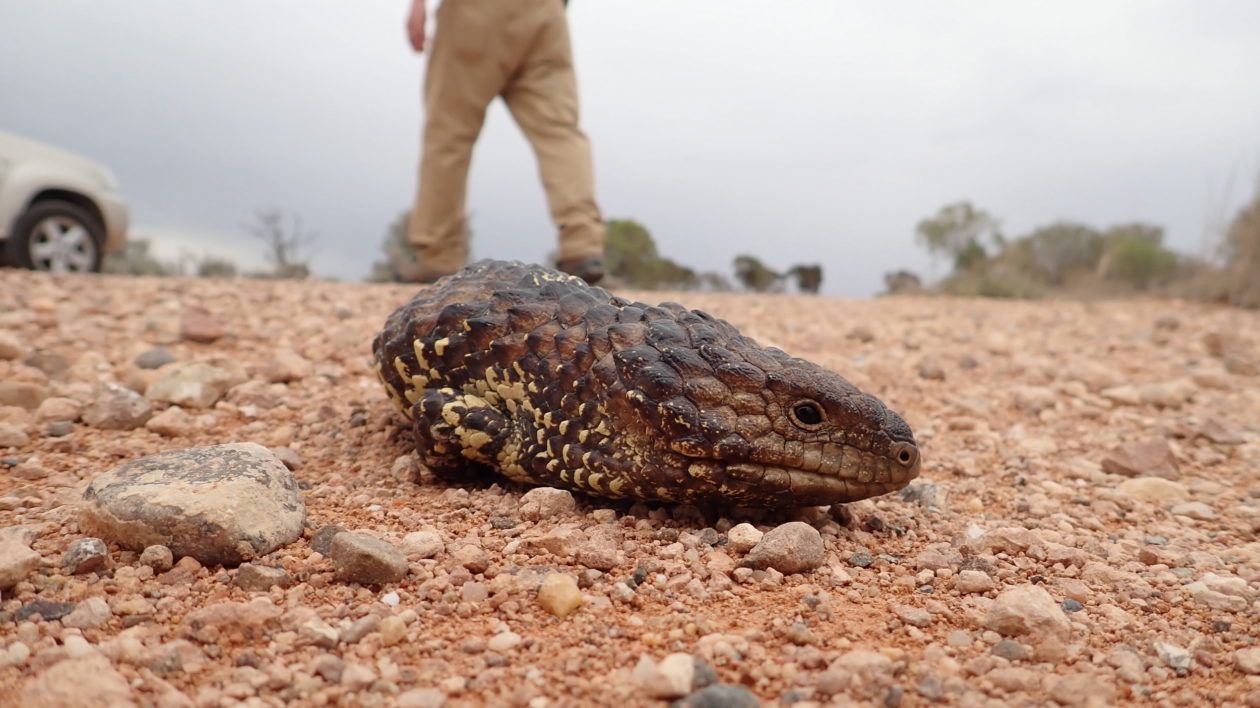
Next, Gardner performs an assessment that, for lack of a better term, we’ll call a sleepy lizard personality test: He reaches down towards the lizard — as if he were going to pick it up — and records its reaction. The lizards usually respond in one of three ways: (1) they mouth-gape, attempting to frighten this would-be predator, (2) they try to run away, or (3) they do, as Gardner says, “absolutely nothing.”
It’s somewhat analogous to the flight, fight, or freeze reactions humans exhibit when threatened, and Gardner has noticed that the lizards tend to react the same way each time they’re caught. “They have these little personalities,” he says, “and they have consistent behavior over time.”
Those personalities extend to their romantic relationships. When researchers looked at sleepy lizard partnerships at the Flinders study site, they found that male sleepy lizards tend to be either “lovers” or “fighters.” The less aggressive “lovers” were more attracted to areas with lots of food and better shelter, which is perhaps why they had more success hanging on to their mates over the years. Meanwhile, the more aggressive “fighter” males had weaker pair bonds with their partners.
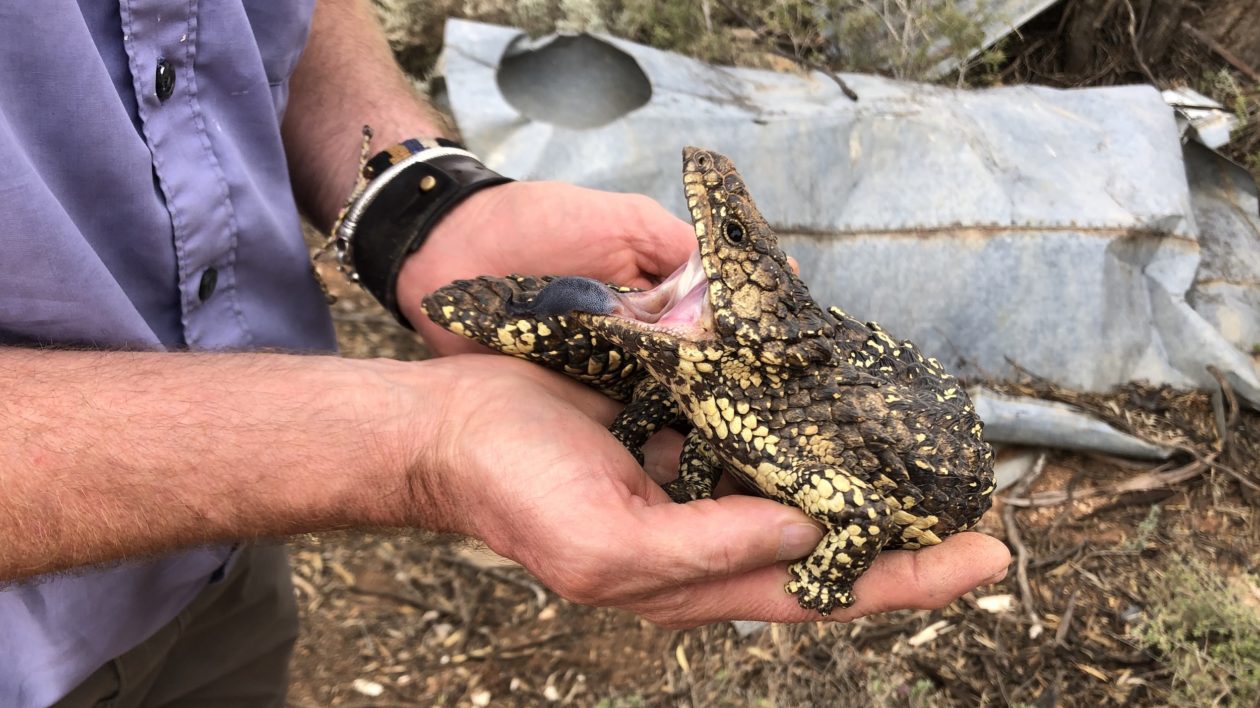
Death, Data, and the Value of Long-Term Research
Mike Bull ran the sleepy lizard research project until 2016, when he died of a heart attack just one month after finishing the 35th year of surveys. His longtime collaborator and field coordinator, Dale Burzacott, died unexpectedly just a few months later.
Everything landed on Gardner’s desk: the survey, research projects, supervising more than 20 graduate students, and the fight to convince funders that the project was still worthwhile. “I happened to be in the right spot at the right time to take this on, and I’m really grateful,” says Gardner.
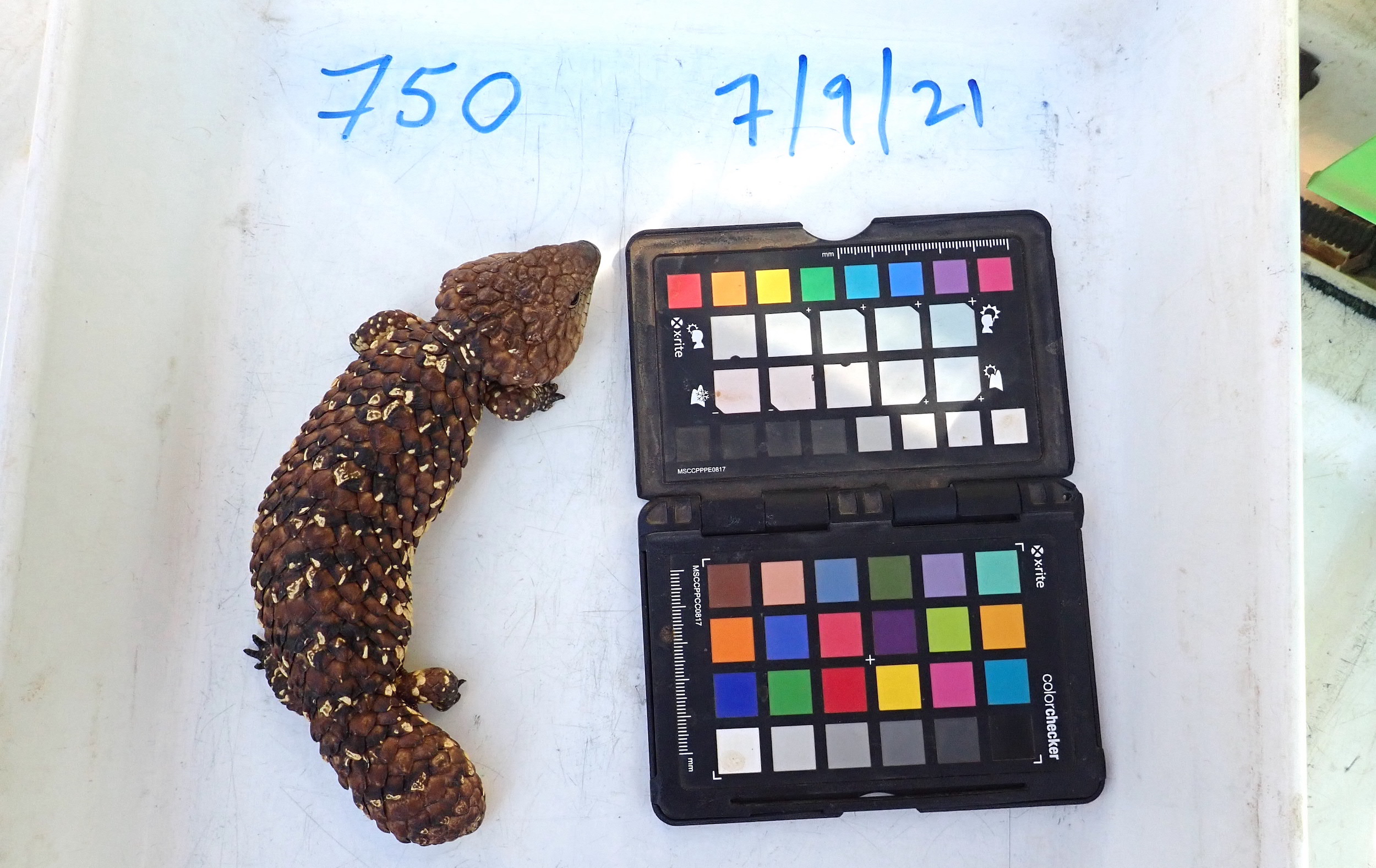
You might wonder: Why keep studying sleepy lizards, after all this time? The combination of a long-running field project on a long-lived animal (that’s very easy to catch) is a rare thing in conservation science. Four decades of data allow Gardners and his collaborators across the world to ask questions — about social relationships, speciation, health and genetics — that they would otherwise never be able to answer.
“We can follow individuals for 40 years,” he says. “I’ve caught lizards that were [first] marked in 1987, and it’s just amazing to have the same lizard just doing its thing out there for all this time.”
After pestering my little lizard for a few more photos, I pick it up and carry it across the road, away from the speeding tires of 4-wheel drives. We stare at one another, and it occurs to me that we could very well be the same age. And then it turns and trundles off into the scrub in search of flowers, bob-tail waggling with each step.
That’s one remarkable little lizard.
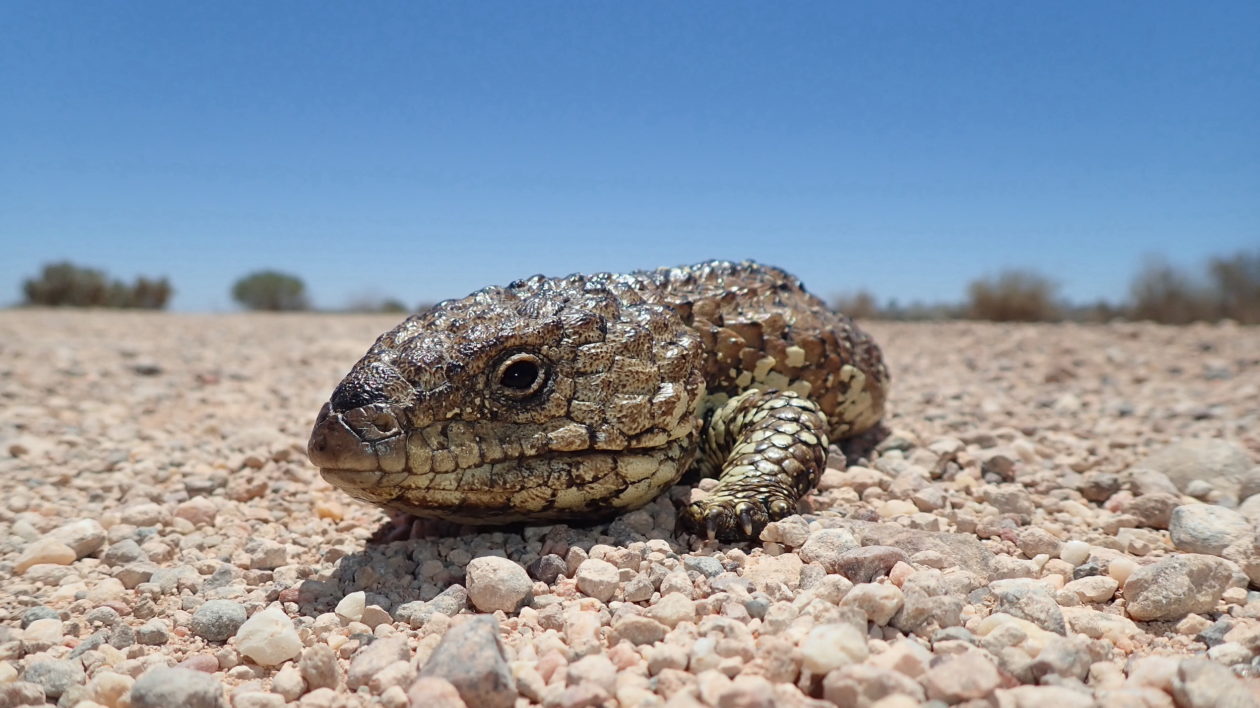
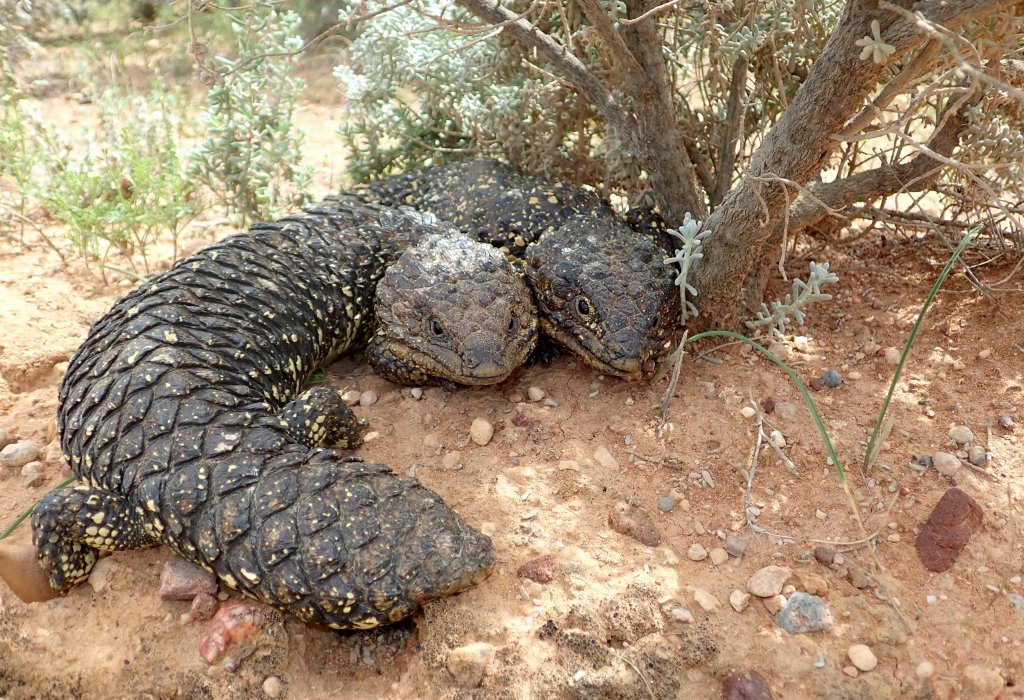



We have had Bobtails move into our home in the suburbs for years now, currently have one that has taken up residence for the last month in our front room, he sleeps behind the curtain and so long as he can’t see us he thinks he is hidden, comes out to beg for food every few days. We feed him a varying diet of red capsicum, small tomatoes, strawberries, quality mince, yellow flowers, dehydrated worms and water. Our back door is always left open as we also have two small dogs that do not bother the lizard.
these little creatures are so cool!
Very very interesting information about sleeping lizards that I never saw or heard at the Bronx zoo 70 years ago. I agree with you we should protect all plants and animals but not just in Australiana but world wide.
hi everyone nature is so beautiful with its animals and other things like lizards and etc.
but some unfair people destroy this chain so we have to protect our nature and its all things do you agree or disagree with my decisions?
Hi. Do other adult SLEEPY LIZARDS kill other baby SLEEPY’S?
This was such a delight to read! And as an amateur herp enthusiast, I so appreciate learning new and astonishing facts about these amazing creatures. Thank you!
Great article about one of our favourite species!
Justine,
I have enjoyed reading your writings for The Nature Conservancy in the past. Love Stories of Sleepy Lizards has been my most recent read. Informative, scientific, ( anthropomorphic- indeed), colorful, humorous, good photos (to do those critters justice) was all it took to draw me back to what I love to do the most. Stop. Look. Listen to the lives of Mother Nature and share her stories to the world.
Great article Justine! It is a privalige for me to work on this long term project with these amazing lizards.
Thanks,
Mike G